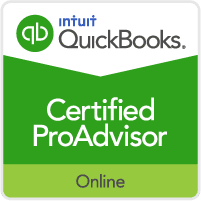Financial Insights for Small Business Owners
Understanding the financial health of your business is essential for making informed decisions and driving sustainable growth. Central to this comprehension are financial statements, which provide valuable insights into your business’s performance, profitability, and liquidity. This article will break down the key financial statements—balance sheets, income statements, and cash flow statements—and explain how they offer crucial insights for small business owners.
Importance of Understanding Financial Statements
For small business owners, grasping the intricacies of financial statements is paramount. These statements serve as the economic heartbeat of your business, offering a snapshot of its financial position, profitability, and cash flow. By understanding and interpreting these statements, small business owners can make informed decisions, identify areas for improvement, and chart a course for long-term success.
Overview of Balance Sheets, Income Statements, and Cash Flow Statements
Before getting into the specifics of each financial statement, let’s provide a brief overview:
- Balance Sheet: A balance sheet provides a snapshot of a company’s financial position at a specific point in time. It outlines the company’s assets, liabilities, and equity, showing how resources are allocated and financed.
- Income Statement: An income statement, also known as a profit and loss statement, measures a company’s financial performance over a specific period. It summarizes revenue, expenses, and net income (or loss), offering insights into profitability.
- Cash Flow Statement: A cash flow statement tracks the inflow and outflow of cash over a period, categorizing cash flows into operating, investing, and financing activities. It reveals how money is generated and used by the business.
Understanding the Balance Sheet
The balance sheet is a fundamental financial statement that provides insight into a company’s financial position at a specific moment. It comprises three main components:
- Assets: These are resources owned by the company, such as cash, inventory, equipment, and property. Assets are categorized as current (short-term) or non-current (long-term).
- Liabilities: Liabilities represent the company’s obligations to creditors, including loans, accounts payable, and accrued expenses. Like assets, liabilities are classified as current or non-current based on maturity.
- Equity: Equity represents the ownership interest in the company held by shareholders. It is calculated as assets minus liabilities and reflects the business’s net worth.
The balance sheet is crucial for assessing a business’s financial health and stability. It shows whether the company has sufficient assets to cover its liabilities, providing insights into solvency and liquidity.
Analyzing the Income Statement
The income statement summarizes a company’s financial performance over a specific period, typically a month, quarter, or year. It consists of three main components:
- Revenue: Revenue, also known as sales or income, represents the total amount earned from selling goods or services.
- Expenses: Expenses are the costs incurred by the company in generating revenue. They include operating expenses, such as rent, salaries, utilities, and non-operating expenses, like interest and taxes.
- Net Income: Net income (or net loss) is the difference between total revenue and expenses. It indicates the profitability of the business during the period.
The income statement provides valuable insights into a company’s profitability and performance. Small business owners can identify areas of strength and weakness in their operations by analyzing revenue trends, expense ratios, and net income margins.
Deciphering the Cash Flow Statement
The cash flow statement tracks the cash movement into and out of business over a specific period. It is divided into three main sections:
- Cash Flow from Operating Activities: This section shows the cash generated or used by the company’s core business operations, such as sales and expenses.
- Cash Flow from Investing Activities: This section reflects cash flows related to the purchase or sale of long-term assets, such as property, equipment, and investments.
- Cash Flow from Financing Activities: This section accounts for cash flows from borrowing or repaying loans, issuing or repurchasing stock, and paying dividends.
The cash flow statement is essential for assessing a company’s liquidity and sustainability. It shows whether the business generates enough cash to cover its operating expenses, invest in growth opportunities, and meet its financial obligations.
Interpreting Financial Health
In addition to understanding individual financial statements, small business owners can use financial ratios and trends to assess their company’s overall economic health. Some key ratios to consider include:
- Current Ratio: This ratio measures a company’s ability to pay its short-term liabilities with its assets. A higher current ratio indicates greater liquidity and financial stability.
- Debt-to-Equity Ratio: This ratio compares a company’s total debt to its shareholders’ equity, indicating its leverage and financial risk. A lower debt-to-equity ratio suggests less reliance on debt financing.
- Gross Profit Margin: This ratio measures the percentage of revenue that exceeds the cost of goods sold, reflecting the company’s profitability before operating expenses are deducted.
By analyzing financial ratios and trends over time, small business owners can identify warning signs, such as declining profitability or increasing debt levels, and opportunities for improvement, such as cost-saving initiatives or expansion strategies.
Conclusion
Understanding financial statements is essential for small business owners to assess their company’s financial health, profitability, and liquidity. By analyzing balance sheets, income statements, and cash flow statements and interpreting key ratios and trends, small business owners can make informed decisions, identify areas for improvement, and chart a course for long-term success. Prioritizing financial literacy and leveraging the insights provided by financial statements can help small business owners navigate challenges, seize opportunities, and build a strong and resilient business.
Are you ready to gain a deeper understanding of your business’s financial health and take control of your financial future? In Balance Bookkeeping Solutions is here to help. Visit our website to learn more about our expert financial services tailored to small business owners. From interpreting financial statements to implementing strategic financial planning, we’re committed to helping you achieve your business goals. Don’t let financial uncertainty hold you back—contact us today to schedule a consultation and take the first step toward financial empowerment and success.





